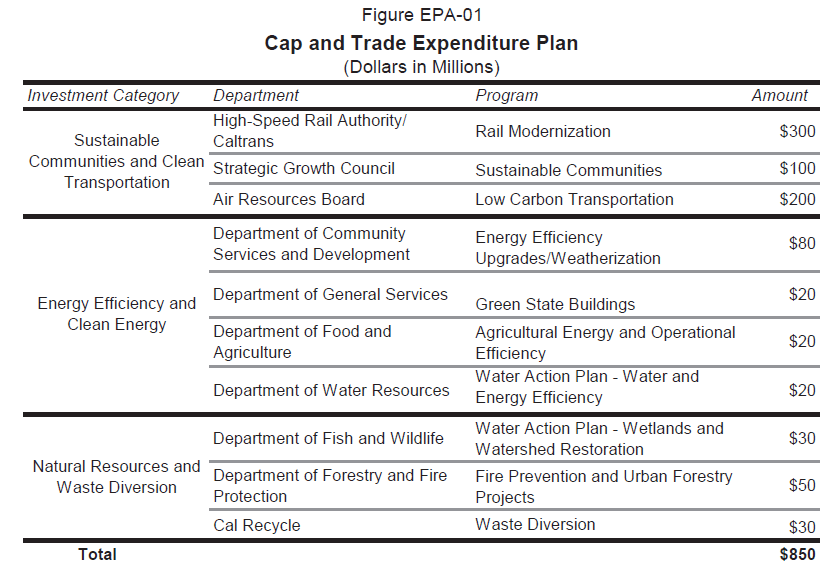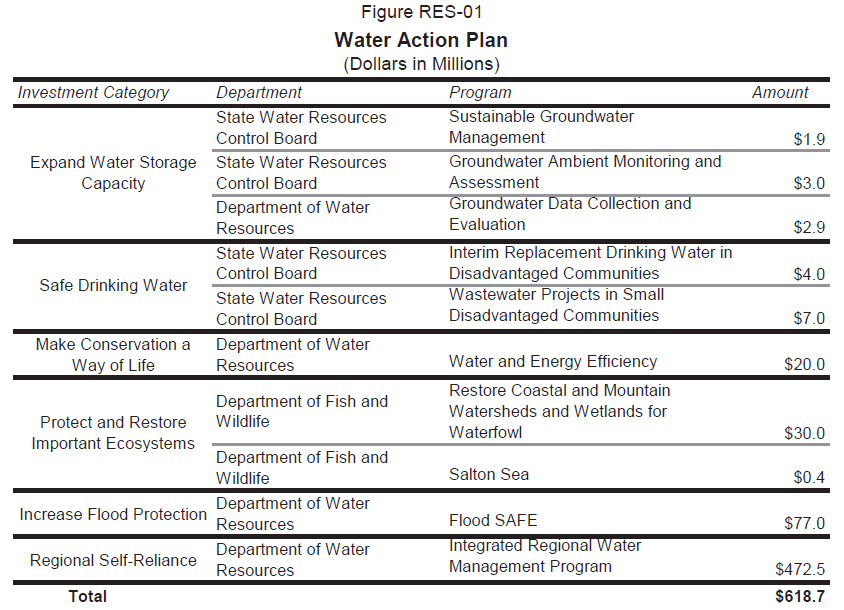The state budget was released early last week due to a leak of the Governor’s Budget Summary. In the $154.9 billion dollar state budget, $13.6 billion will not be spent, instead going into rainy day funds and debt repayment. It’s critical to note that the budget can still be adjusted, and the fat lady has not sung until the May revise (at least), so keep the pressure on the agencies and the Governor to ensure a budget that will help us protect our lands, air, waters and communities.
FY-14-15 Budget Overview
Overall, the Governor’s FY 14-15 budget is an improvement over recent budgets in allocating more funds toward environmental protection – not surprising considering the improving state of California’s economy. Also not surprisingly though, since we are not out of the woods yet with our long-troubled economy, we are still not seeing the kind of investment in our environment as would be ideal, and a few problem areas with the Governor’s budget remain.
From the total budget, 2% is going to programs considered “Environmental Protection,” and 2.9% into “Natural Resources.” This money comes from various sources, most notably revenue from the AB 32 Greenhouse Gas Reduction cap and trade auctions – $750 million from the anticipated auction revenue in 2014, and $100 million from the General Fund (as a partial repayment of the $500 borrowed by the Governor from last year’s cap and trade auction revenue). This creates a total of $850 million to be distributed to meet the goals of AB 32, particularly the goals provided by the SB 535 framework of investing in and for disadvantaged communities. $225 million of the cap and trade revenue will be invested to benefit disadvantaged communities through a variety of programs and departments.

Perhaps the most controversial aspect of the Cap and Trade investment is the $250 million allocated to High Speed Rail, plus an additional $30 million for rail modernization that will link up other rail to HSR. Some environmental advocates and the Legislative Analyst’s Office have raised concerns that this investment will not reduce greenhouse gas emissions on target with AB 32’s timeline, and should instead be invested in more near-term priorities such as energy conservation, distributed generation renewable energy projects and natural resource protection. That said, this $250M is likely less than the Governor was seeking for HSR, and PCL and other environmental groups are pushing to ensure that all allocations – including those earmarked for High Speed rail –go through a rigorous assessment to ensure funds spent will achieve AB 32’s required greenhouse gas emission reductions as quickly as possible.
Money from cap and trade is also going into low carbon transportation ($200 million), energy efficiency ($80 million to the energy efficiency, focusing on low-income homes; $20 million to green state buildings; $20 million for agricultural efficiency, and $20 million for water efficiency), and natural resources protection ($30 million for wetland and watershed restoration, $50 for fire prevention and urban forestry) and waste diversion ($30 million).
Department of Water Resources and the State Water Resources Control Board are allotted money for a number of projects in addition to those funded by the cap and trade revenue. $200.3 million will be invested in the drinking water reorganization plan. $11.9 million will be invested for groundwater management and improvement of drinking water in disadvantaged communities. Integrated Regional Water Management Plans are getting $472.5 million. $77 million is going into flood control. The Safe Drinking Water and Toxic Enforcement Fund run by the Office of Environmental Health and Hazard Assessment is getting $785,000.
In development and land use, $815 million is going into infrastructure, including roads and buildings. $100 million is coming from the Cap and Trade money to implement Sustainable Community Strategies.

Changes from FY 2013-2014
The Coastal Commission saw a discontinuation of a one-time $3 million allotment from FY 2013-2014 and is down to an $18 million budget in FY 2014-2015. The budget of the Air Resources Board increased by $249 million. The State Water Resources Control Board’s budget increased by $230 million, especially in water quality and drinking water quality, and in administration.
The Department of Water Resource’s budget decreased slightly, most notably in Public Safety and Prevention of Damage.
These are only the early numbers. We’ll know more about the budget after the May revise; in the meantime, advocates may still argue for more funding for natural resources and environmental protection.
